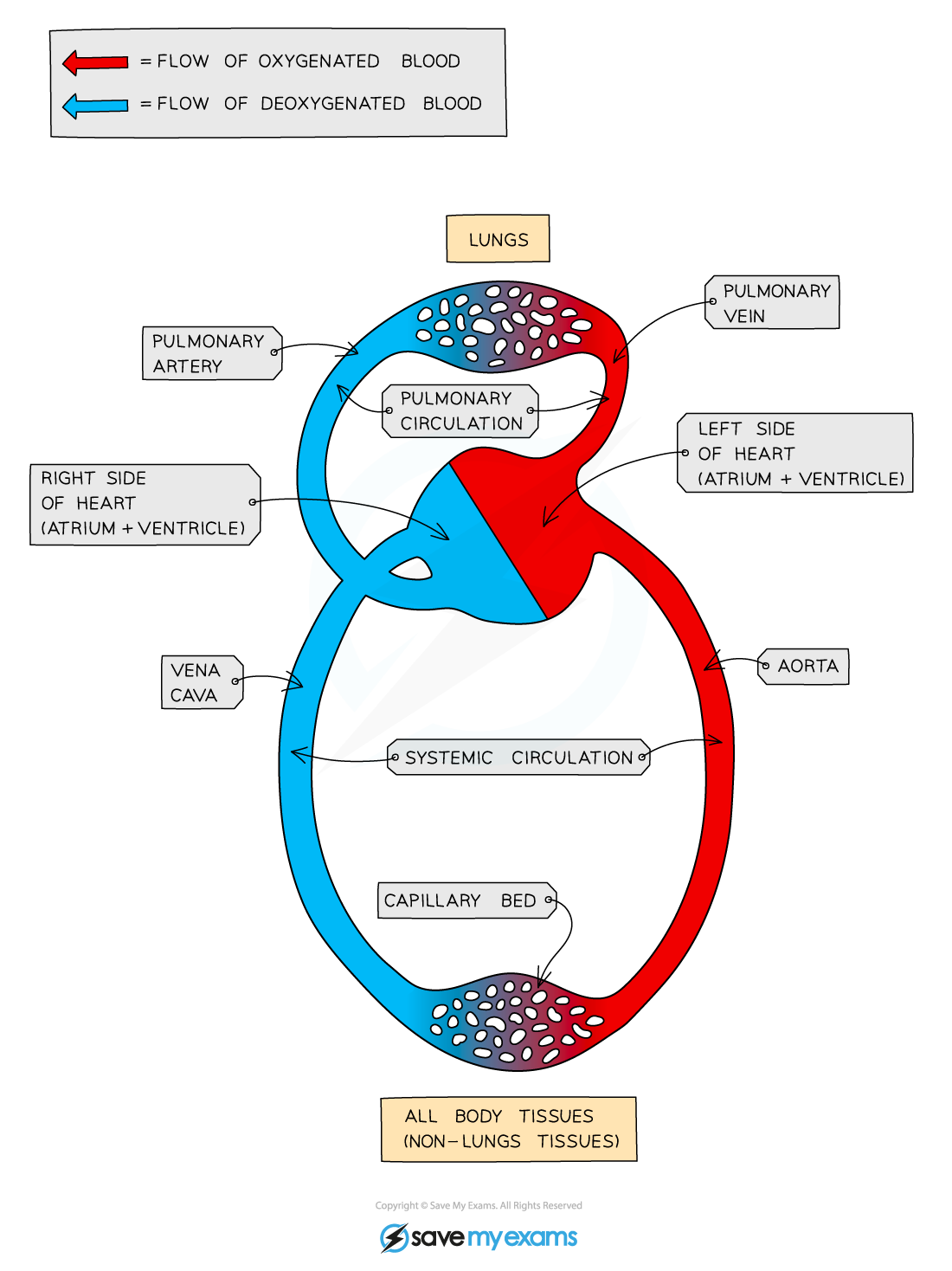- 翰林提供学术活动、国际课程、科研项目一站式留学背景提升服务!
- 400 888 0080
AQA A Level Biology复习笔记3.5.1 Mammalian Circulation
Blood Circulation in Mammals
The need for a circulatory system
- The cells of all living organisms need a constant supply of reactants for metabolism, e.g. oxygen and glucose
- Single celled organisms can gain oxygen and glucose directly from their surroundings, and the molecules can diffuse to all parts of the cell quickly due to short diffusion distances
- Larger organisms, however, are made up of many layers of cells, meaning that the time taken for substances such as glucose and oxygen to diffuse to every cell in the body would be far too long
- The diffusion distances involved are too great
- To solve this problem their exchange surfaces are connected to a mass transport system, for example
- The digestive system is connected to the circulatory system
- The lungs are connected to the circulatory system
- Mass transport is the bulk movement of gases or liquids in one direction, usually via a system of vessels and tubes
- The circulatory system in mammals is a well-studied example of a mass transport system; the one-way flow of blood within the blood vessels carries essential nutrients and gases to all the cells of the body
Open & closed systems
- Circulatory systems are either described as being open or closed
- In a closed circulatory system, blood is pumped around the body and is always contained within a network of blood vessels
- All vertebrates and many invertebrates have closed circulatory systems
- In an open circulatory system, blood is not contained within blood vessels but is pumped directly into body cavities
- Organisms such as arthropods and molluscs have open circulatory systems.
- Humans have a closed double circulatory system: in one complete circuit of the body, blood passes through the heart (the pump) twice
- The right side of the heart pumps blood deoxygenated blood to the lungs for gas exchange; this is the pulmonary circulatory system
- Blood then returns to the left side of the heart, so that oxygenated blood can be pumped efficiently (at high pressure) around the body; this is the systemic circulatory system

The double circulatory system in mammals
Main Circulatory System Structures Table

The main blood vessels
- Pulmonary artery - carries deoxygenated blood away from the heart, towards the lungs
- Pulmonary vein - carries oxygenated blood away from the lungs, towards the heart
- Coronary arteries - supply the heart with oxygenated blood
- Aorta - carries oxygenated blood out of the heart and to the rest of the body
- Vena cava - carries deoxygenated blood into the heart
- Renal artery - supplies the kidneys with oxygenated blood
- Renal vein - carries deoxygenated blood away from the kidneys, towards the heart
转载自savemyexams


最新发布
© 2025. All Rights Reserved. 沪ICP备2023009024号-1








